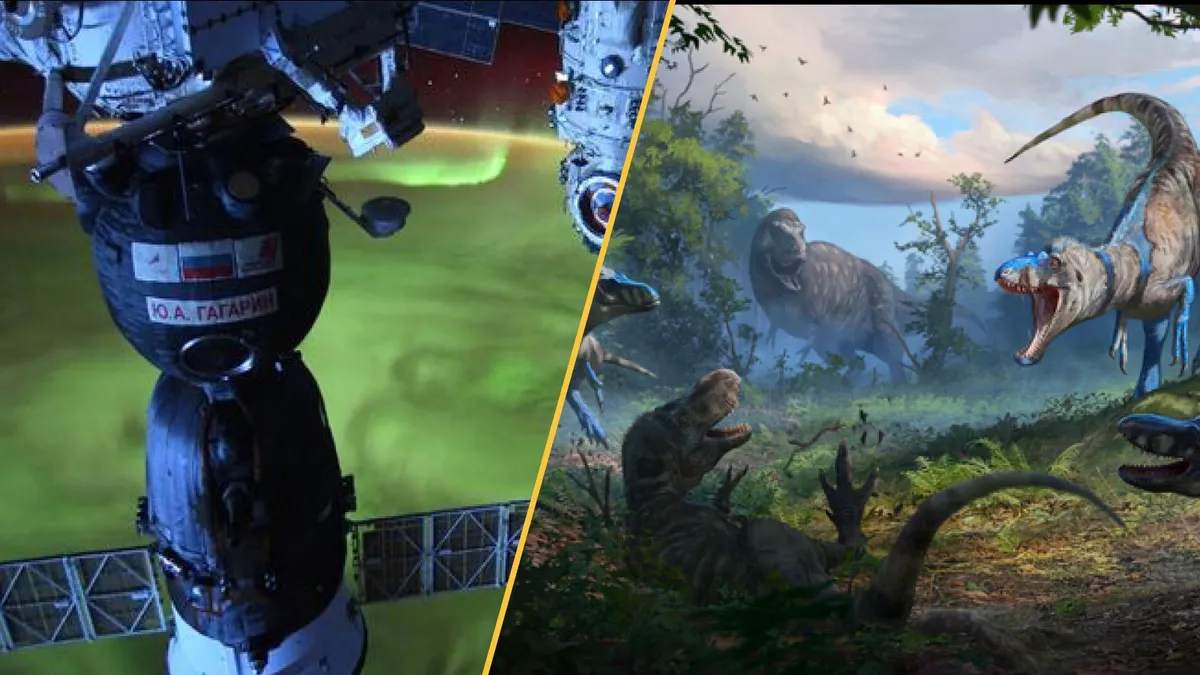
The hottest science news this week has centered around the sun, featuring groundbreaking studies that delve into the mysteries of our star and the intriguing interstellar comet currently making its way through the solar system. Scientists have recently uncovered a pivotal clue explaining why the sun's outer surface is significantly hotter than its core. A new study reveals that magnetic waves—theorized since the 1940s but only now detected—transport energy from the sun's inner furnace to its outer corona.
These powerful solar magnetic fields can twist and break, occasionally launching massive solar flares and torrents of charged particles that can trigger intense geomagnetic storms on Earth. In another study this week, researchers have shed light on the potentially catastrophic impact of these superstorms, warning that the next extreme event could potentially obliterate all of our satellites.
Meanwhile, Comet 3I/ATLAS has reached perihelion, marking its closest approach to the sun. NASA spacecraft have observed the comet releasing gas at an unprecedented rate, resulting in a rapid increase in brightness. The James Webb Space Telescope provided an in-depth analysis, revealing that the comet's billions of years of travel through interstellar space have exposed it to radiation, altering its chemical composition. Photos captured before its perihelion contribute to our growing understanding, and excitement builds as two spacecraft prepare to navigate through the comet's tail.
In paleontological news, a remarkable fossil discovery has reignited the debate surrounding the classification of Nanotyrannus. This long-standing controversy questioned whether this creature was merely a juvenile Tyrannosaurus rex or a distinct species. The Dueling Dinosaurs fossil, unearthed in 2006, features a Triceratops seemingly engaged in a battle with a fearsome tyrannosaur. Recent analyses suggest that the tyrannosaur was not a young T. rex, but rather a fully grown adult of a previously debated species, Nanotyrannus lancensis.
Following this revelation, the scientific community largely accepts that Nanotyrannus is indeed its own species. However, this discussion is complicated further by another team naming a different new species within the same genus, Nanotyrannus lethaeus. As discussions continue, the question remains: has the dust settled, or is there more contention on the horizon?
In a fascinating exploration of Neanderthal diet, researchers are questioning whether these ancient humans consumed anything beyond meat. When envisioning a Neanderthal's meal, most people picture them gnawing on a hefty piece of meat. However, new studies indicate that they may have also incorporated plant-based foods into their diet. This shift in understanding invites further investigation into the dietary habits of our extinct relatives.
In technology news, a recent study has revealed an intriguing phenomenon: being rude to chatbots like ChatGPT may actually improve their accuracy. Researchers found a 4% boost in response accuracy when users adopted a meaner tone. Despite this minor improvement, scientists caution against such behavior, as it may negatively affect interpersonal interactions and could lead to unintended consequences if AI were to develop a sense of sentience.
In addition to the exciting findings mentioned, numerous other scientific advancements have taken place this week:
The Air Force conducted a flight into the eye of Hurricane Melissa, warning that this storm could be catastrophic for Jamaica. Physicists have detected rare 'second-generation' black holes, further validating Einstein's theories. Indigenous Americans were found to have transported a 5-ton tree over 100 miles to what is now North America's largest city north of Mexico over 900 years ago. The James Webb Space Telescope discovered a puzzling object that may be the earliest known galaxy in the universe.In our Science Spotlight, concerns are rising about the future of mRNA research in the United States. Following the rapid development of mRNA-based vaccines during the COVID-19 pandemic, the current administration appears to be scaling back funding and halting research projects. Scientists fear that this withdrawal could hinder revolutionary treatments for cancer, immune deficiencies, and genetic disorders, leaving the U.S. behind in this vital area of research.
If you're looking for engaging reads this weekend, consider checking out some of the best polls, interviews, and opinion pieces published this week:
Would you support eliminating daylight saving time? Participate in the poll! Interview with epidemiologist Dr. Seth Berkley discussing the evolving landscape of anti-vaccine engagement. Opinion piece arguing that 'settled science' should not be dismissed.In a special treat for Halloween, the James Webb Space Telescope unveiled a captivating image of a dying sun, showcasing the eerie beauty of the Red Spider Nebula. This planetary nebula is a product of stars like our sun reaching the end of their life cycles, expanding into red giants and shedding their outer layers to create stunning displays of superheated dust. The cosmic spider's legs shimmer with molecular hydrogen, offering a glimpse into the extraordinary processes occurring in our universe.